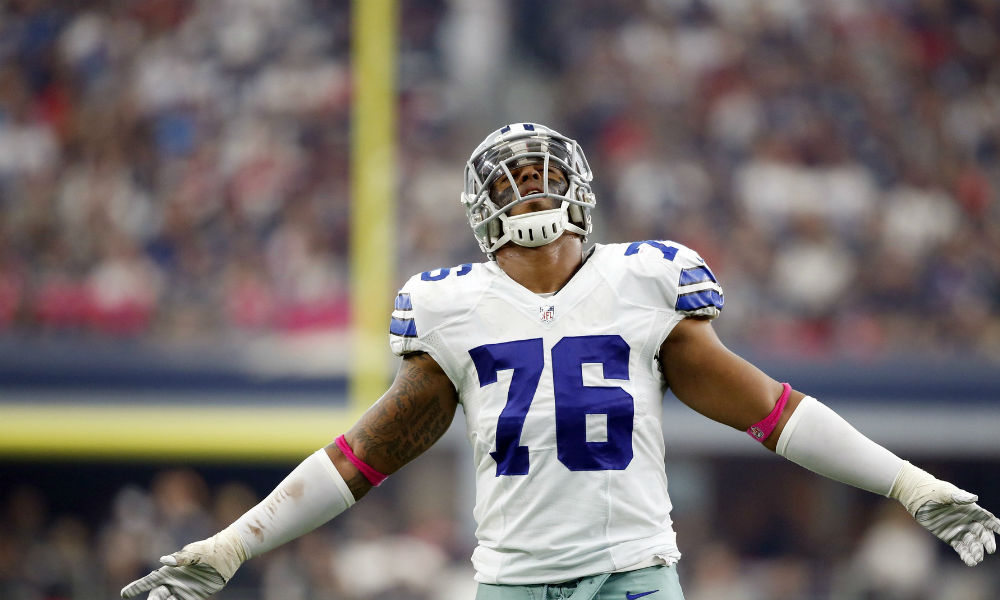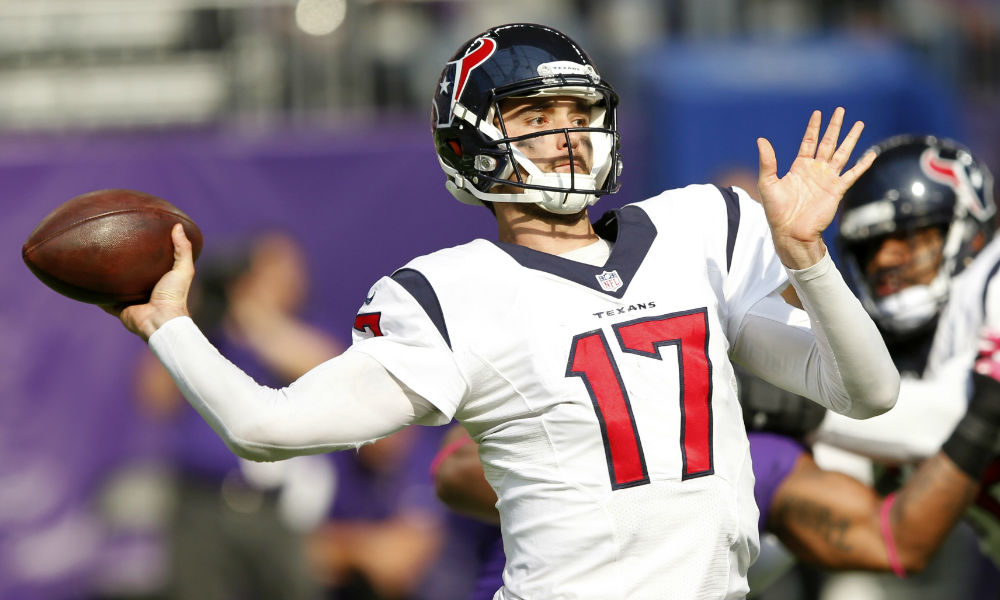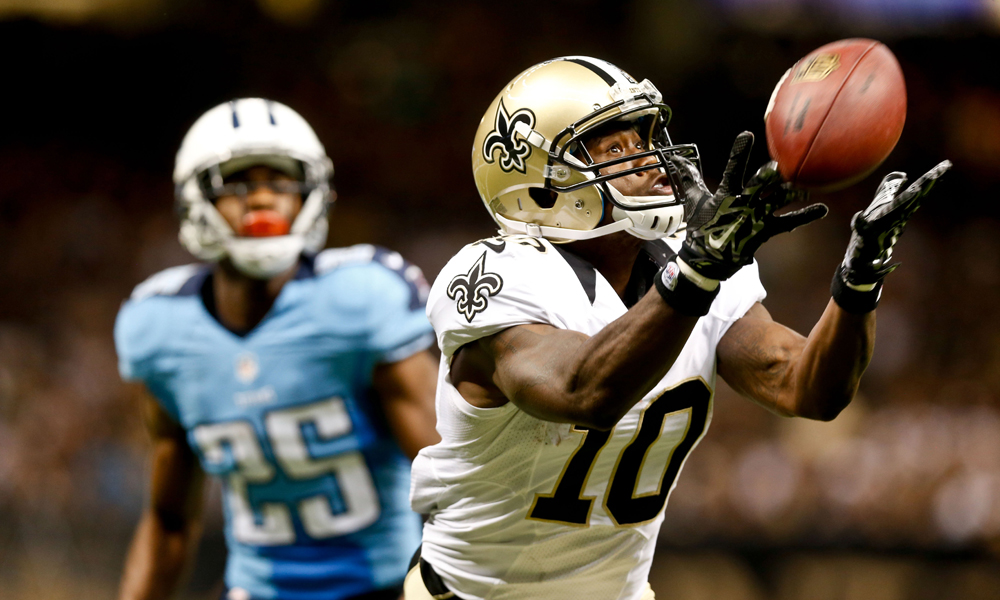News
Who Drafts The Best and Worst Offensive Linemen?
Al Davis was known for his love to draft speed, but his real eye for talent was in the trenches
There are 42 offensive linemen enshrined into the Pro Football Hall of Fame in Canton, Ohio. It is a collection of players from Super Bowl dynasties such as Pittsburgh Steelers center Mike Webster, who enjoyed the celebrations of winning two Lombardi Trophies. On the opposite end of the offensive line spectrum was a player like Dan Dierdorf who played for the St. Louis Cardinals 13 years and suffered through seven losing seasons.
The mixture of the two creates a wide array of teams that could be considered some of the best at drafting offensive linemen. It also carves a clearer path to who has not exactly been able to capitalize on building the offensive interior via the annual NFL Draft.
Three of the teams listed below that are considered top-shelf at evaluating and developing offensive linemen via the NFL Draft have combined for 14 Super Bowl wins. The three teams referenced for their inability to deliver quality offensive linemen in the NFL Draft have combined for one Super Bowl win.
Win up front and history proves that you can win it all.
Who Drafts the Best Offensive Linemen?
Oakland Raiders
Legendary owner Al Davis never shied away from displaying his fondness for speed and athleticism, usually reserved for the skill position players. Davis may get overlooked for his knack of finding the tough-guys in the trenches.
It begins with Hall of Famer Jim Otto who made 12 straight Pro Bowls and considered one of the all-time greats of the game. To be technical, Otto went undrafted after finishing his career at the University of Miami (FL). No NFL team showed interest in Otto, but Davis and his Oakland Raiders signed him to the new American Football League.
Otto’s career dominated a span over a decade (1961-72) where he was joined by two other Hall of Fame offensive linemen, Gene Upshaw and Art Shell, near the end of his own career.
Upshaw (1967) and Shell (1968) entered the fray in the late 1960’s and helped establish Oakland as one of the top offensive lines in the history of the league. Harry Schuh made three Pro Bowls during that time and goes relatively unnoticed as well as Wayne Hawkins who played along side Otto and appeared in five straight Pro Bowls (1963-67).
The Raiders attract controversy and so will another Oakland offensive line being counted towards their draft day production that technically was not drafted by the team.
Steve Wisniewski was not drafted by Oakland, but was only a Dallas Cowboys for ten minutes. Selected in the second-round of the 1989 NFL Draft, he was immediately traded to the (Los Angeles) Raiders along with a sixth-round pick in exchange for Daryl Johnston and Rhondy Weston.
Wisniewski played all of his 13 seasons in the league with the Raiders and made it to the Pro Bowl eight times. He was known as the “Wiz” and Wisniewski helped the Silver-N-Black establish themselves as one of the richest teams in identifying offensive lineman via the NFL Draft.
Pittsburgh Steelers
They say you win in the trenches and Pittsburgh has won more Super Bowls (six) than any other team in the history of the NFL.
Their success began in the 1970’s, drafting both sides of the football with a feverishly amount of success that helped turn a unsuccessful franchise into one of the most respected in all of professional sports.
Pittsburgh has been able to establish a brilliant track record of success drafting players along the offensive line. Their success is not conduced to a particular time in the franchise, but instead a span that lasts decades.
For instance, center Mike Webster (Hall of Famer) earned Pro Bowl invitations nine times after being drafted by the Steelers in the fifth-round of the 1974 NFL Draft.
In 1988 the torch was passed between two of the best centers the game has ever known. Webster played his final year in Pittsburgh (1988) while a rookie named Dermontti Dawson was feeling his way through his first season in the NFL. Dawson would join Webster in Canton, Ohio after being inducted into the Pro Football Hall of Fame in 2012. Dawson made the trip to Hawaii seven straight years (1992-98) with his streak of Pro Bowl appearances.
Dawson played in his last Pro Bowl in 1988, the same exact year the Steelers drafted offensive tackle Alan Faneca. He helped continue the rich heritage Pittsburgh has at drafting offensive lineman. Faneca matched Dawson with seven straight Pro Bowls (2001-07) leaving little doubt on the Steelers success regarding their understanding and evaluation of the positions along the offensive line.
The next generation of elite linemen is bestowed on another center in Maurkice Pouncey. In four of his first five seasons he has earned Pro Bowl invitations and twice has been named First-Team All-Pro.
Dallas Cowboys
Dallas has won five Super Bowls and helped Emmitt Smith become the NFL’s all-time leading rusher. Those two achievements you will not achieve without the knowledge and understanding of finding and developing offensive linemen in the NFL Draft.
The recent enshrinement of tackle Larry Allen into the Hall of Fame is the icing on the cake for the Cowboys in regards to their success over the years at drafting top tier offensive linemen. Allen helped pave the way along with his teammates up-front that included Nate Newton, Mark Tuinei, Kevin Gogan, Erik Williams and Mark Stepnoski.
It was that nucleus that helped the Cowboys win three Super Bowl’s in four years. Their overwhelming talent along the O-line along with his own exceptional abilities, Emmitt Smith surpassed Walter Payton with the most rushing yards in NFL history (18,355).
Dallas yields two of the NFL’s top-ten all-time rushers with Tony Dorsett (12,739) residing eighth-overall accompanying Smith on the exclusive list of the game’s best running backs. Dorsett’s highest single-season rushing total (1,646) came in 1981 behind an offensive line that also featured one of the team’s all-time greats in tackle Pat Donovan.
The Cowboys first draft was in 1961 and since that time they have used their first-overall pick in a draft on offensive linemen only seven times. The team has taken a liking to drafting offensive of late since three of those sevens selections took place in the last fives years. The list includes Tyron Smith (2011), Travis Frederick (2013) and Zack Martin (2014).
Dallas has restocked the shelves with another generation of talented offensive linemen built through the NFL Draft.
Who Drafts the Worst Offensive Linemen?
Tampa Bay Buccaneers
The Buccaneers did not take their first snap as a franchise until 1976 so in the big scope of things they are relatively a young franchise compared to some teams in the NFL. They are limited in the amount of long-term success possibly enjoyed by other teams when it comes to having positive results drafting offensive linemen.
It is not to say the Buccaneers haven’t tried via the draft to build a strong interior up front on the offensive side of the football. In the history of the franchise (1976-2015), they have used six No. 1 selections on the men up front. In comparison the Dallas Cowboys first time drafting was in 1961 and they have selected seven offensive linemen with their first pick.
However, Tampa Bay has never had that dominating figure in the unit.
Paul Gruber spent his entire NFL career in Tampa Bay (1988-99) and was possibly the best linemen the team ever drafted. Taken out of Wisconsin in the 1988 NFL Draft, he become the cornerstone of the offensive line playing in 183 games over his 12-year tenure with the team. He made it to two Pro Bowls and his 183 games (started) was a team record until 2007 when linebacker Derrick Brooks broke it.
The last player drafted in the first round by the Buccaneers was Kenyatta Walker (2001) out of Florida. He never materialized into the long-term value the team envision after using the 14th overall selection on him. Walker started in 73 of the 75 games which he played and was part of the franchise’s only Super Bowl win (2003). He provided consistency but never was able to muster the ability to be named a Pro Bowl player for Tampa Bay.
Jacksonville Jaguars
Jacksonville started out terrific drafting offensive linemen. Their first pick as a franchise was none other than Tony Boselli, who was a three-time All-Pro and five time Pro Bowler between (1996-01). A member of the NFL 1990’s All-Decade Team he is honored in Pride of the Jaguars (team’s Hall of Fame).
That basically sums up the success of the Jacksonville Jaguars drafting offensive line well in the NFL Draft.
Jacksonville is like an infant though in terms of their time as a franchise in the NFL.
Indianapolis Colts kicker Adam Vinatieri began his NFL career in New England with the Patriots in 1996, just one year after Jacksonville played their first game. Jacksonville’s time in the league limits the amount of possible success they could have achieved. The Pittsburgh Steelers were bottom-dweller’s until rising up in the 1970’s. The coincidence may occur someday in Jacksonville too.
Someday down the road, Jacksonville may have a change of luck drafting offensive linemen and change the fortunes of their own floundering franchise.
Twenty-six offensive linemen have been drafted by the team (1996-15) with Boselli being the only one ever to receive a Pro Bowl invitation. It is easy to identify their lack of success offensively based on their lack of success drafting offensive linemen (and other positions).
Is there a new positive era of offensive line play with Luke Joeckel?
Joeckel was the second overall pick in the 2013 NFL Draft and the results overall as a unit have been underwhelming. In his first season the team allowed 50 sacks (second-worst in NFL) and last year the Jaguars surpassed an already awful performance by leading the league in quarterback sacks allowed (71).
The only positive is that it would be hard to imagine the team being any worse than what they currently are and the silver lining is going to appear sooner rather than later.
That starts with drafting better in the NFL Draft.
Philadelphia Eagles
The greatest offensive linemen in the history of the franchise (Jason Peters) was not even drafted by the Eagles. In fact he was not drafted at all, leaving Arkansas in 2004. He entered the NFL in Buffalo and has put together seven Pro Bowl seasons.
Peters was brought to Philly by former head coach Andy Reid, who proved to be more than able at developing offensive linemen. Shaun Williams and Tra Thomas both serve as examples of that. Absent of Reid’s tenure as head coach, the history of the team when discussing their success drafting offensive linemen is not up to par considering their overall success in the league.
News
Broncos holding their breath on Derek Wolfe
Source: Mike Florio of ProFootballTalk
Powered by WPeMatico
News
Buccaneers admit mistake, boot Aguayo
Source: Mike Florio of ProFootballTalk
Powered by WPeMatico
News
Did Bucs put too much pressure on Aguayo?
Source: Mike Florio of ProFootballTalk
Powered by WPeMatico




